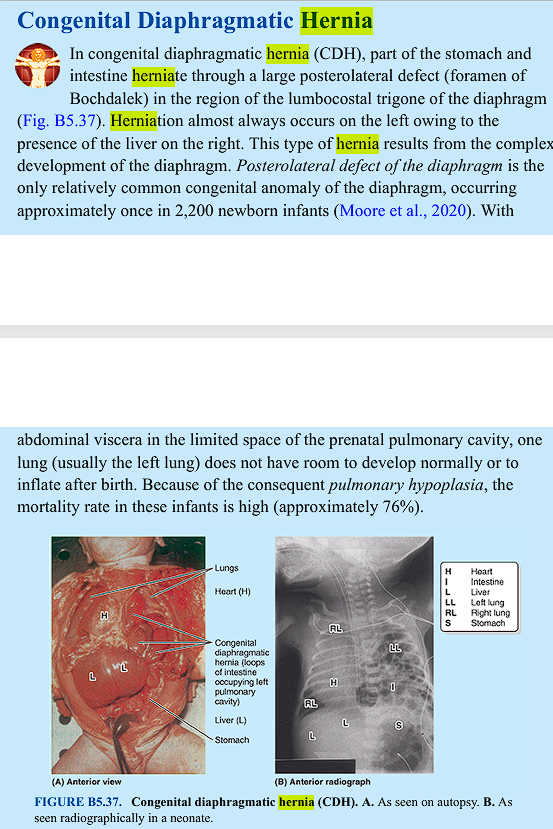clinical correlations CHAPTER 5
1/20
There's no tags or description
Looks like no tags are added yet.
Name | Mastery | Learn | Test | Matching | Spaced |
|---|
No study sessions yet.
21 Terms
what are commonly used for repairing hernias?
inguinal incisions
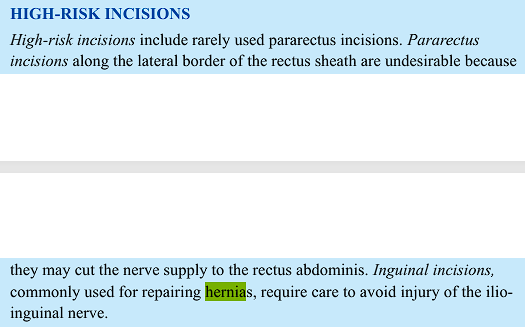
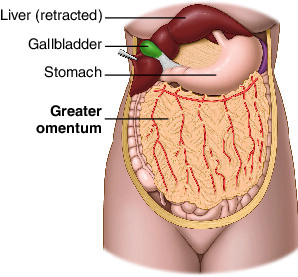
incisional hernia
an incisional hernia is a protrusion of the omentum or an organ through surgical incision.

minimally invasive (endoscopic) surgery (laparoscope)
Endoscopy is a medical procedure that allows a healthcare professional to examine the interior of hollow organs or body cavities using a thin, flexible tube called an endoscope.
laparoscope is the tool used for an endoscopy.
therefore, minimally invasive endoscopic surgery using a laparoscope is used to REPLACE LARGER CONVENTIONAL INCISIONS, thus the POTENTIAL FOR NURVE INJURY, INCISIONAL HERNIA or CONTAMINATION and time required for a healing through a would are MINIMIZED.

inguinal hernia
An inguinal hernia is the general term for a hernia that occurs in the inguinal region (the groin), specifically through the inguinal canal. This is the most common type of hernia, accounting for about 75% of all abdominal wall hernias.Location: The groin, above the inguinal ligament.
General Cause: A weakness in the muscles and fascia of the lower abdominal wall in the inguinal region.
Who it affects: Much more common in males due to the developmental process of the testicles descending through the inguinal canal.
All inguinal hernias are classified as either Indirect or Direct.
The Specific Type: Indirect Inguinal Hernia
An indirect inguinal hernia is one of the two specific types of inguinal hernias. It is the most common type overall, especially in younger people.
Feature | Indirect Inguinal Hernia | Direct Inguinal Hernia |
|---|---|---|
Etiology (Cause) | Congenital (from birth) due to a patent Processus Vaginalis. | Acquired due to a weakness in the abdominal wall muscles in Hesselbach's Triangle. |
Mechanism | The hernia sac follows the path of the Processus Vaginalis, the embryonic tunnel that allowed the testis to descend. | The hernia sac pushes directly forward through a weakened area in the transversalis fascia. |
Hernia Sac | The peritoneal sac is covered by all 3 layers of the spermatic cord (internal spermatic, cremasteric, and external spermatic fasciae). | The peritoneal sac is covered only by the external spermatic fascia. |
Relationship to Inferior Epigastric Vessels | The sac enters the inguinal canal LATERAL to the inferior epigastric vessels. | The sac bulges directly forward MEDIAL to the inferior epigastric vessels. |
Anatomical Path | Goes through the Deep Inguinal Ring -> travels through the entire inguinal canal -> can exit via the Superficial Inguinal Ring and into the scrotum (in males). | Bulges directly forward, often through the posterior wall of the inguinal canal, and does not typically travel the full length of the canal. |
Clinical Presentation | Can occur at any age (common in children and young adults). Often descends into the scrotum. | Almost always in older males (>40 years). Rarely enters the scrotum. The bulge is usually more medial. |
Relation to Spermatic Cord | The hernia sac is located INSIDE the spermatic cord. | The hernia sac is located OUTSIDE the spermatic cord. |
medial inguinal fossae
the same as deepseek.
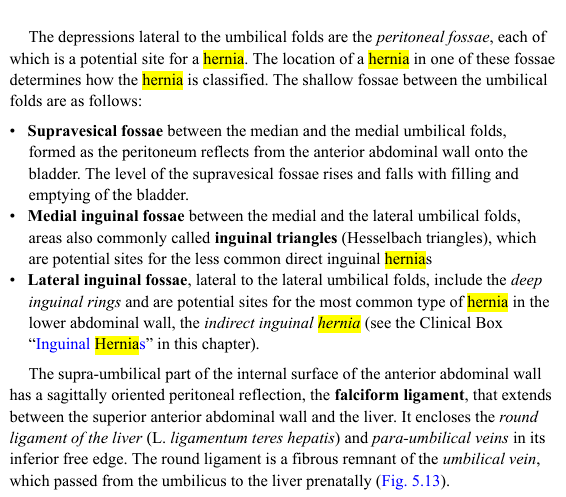
indirect and femoral hernias, myopectineal orfice
The Unifying Concept: The Myopectineal Orifice of Fruchaud
The myopectineal orifice is a single, large, weak area in the lower anterior abdominal wall. It is not a literal hole, but a potential opening bounded by muscles and ligaments.
"Myo-": Refers to muscle (specifically, the arching fibers of the internal oblique and transversus abdominis muscles above).
"Pectineal": Refers to the pectineal line (part of the pubic bone) below.
Think of it as the "weak spot" or "window" in your lower abdomen. All groin hernias (inguinal and femoral) originate as protrusions through this single orifice. They then take different paths through it, which defines their type.
1. Indirect Inguinal Hernia
This is the most common type of groin hernia.
Etiology (Cause): Congenital. It results from the failure of the processus vaginalis (the embryonic tunnel that guided the testis's descent) to close completely after birth.
Pathway: The hernia sac enters the inguinal canal by pushing through the deep (internal) inguinal ring. This ring is located in the superolateral part of the myopectineal orifice.
Relationship to Inferior Epigastric Vessels: The sac is LATERAL to these vessels.
Clinical Note: It can occur at any age but is common in younger people. It follows the path of the spermatic cord and can descend into the scrotum.
2. Femoral Hernia
This is a less common but clinically important type, more frequent in women.
Etiology (Cause): Acquired. It is due to a weakness in the tissue overlying the femoral canal.
Pathway: The hernia sac passes below the inguinal ligament through the femoral canal. The femoral canal is located in the inferomedial part of the myopectineal orifice.
Relationship to Inferior Epigastric Vessels: The sac is also LATERAL to these vessels, but its path is inferior to the inguinal ligament, which is the key differentiator from an indirect hernia.
Clinical Note: Presents as a bulge in the upper thigh, below the groin crease. It has a high risk of strangulation because the femoral ring is a tight, rigid space.

most groin hernias in male pass SUPERIOR to the iliopubic tract (inguinal hernias)
where as most groin hernias in females pass INFERIOR to the iliopubic tract (femoral hernias)

what is the affect of INCREASED intra-abdominal pressure on the inguinal canal and hernias?
the deep and superficial inguinal rings do not overlap because of the oblique path on the inguinal canal.
as a consequence, increases of inguinal abdominal pressure act on the inguinal canal, forcing the posterior wall of the canal against the anterior wall of the canal, strengthening this wall and decrease the likelihood of gaining a hernia UNTIL THE PRESSURE OVERCOMES THE PRESSURE OF THE WALLS PUSHING AGAINST EACH OTHER.
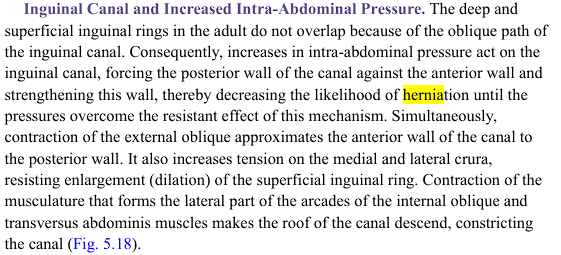
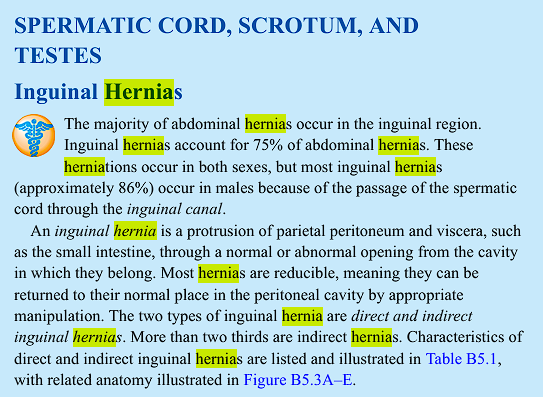
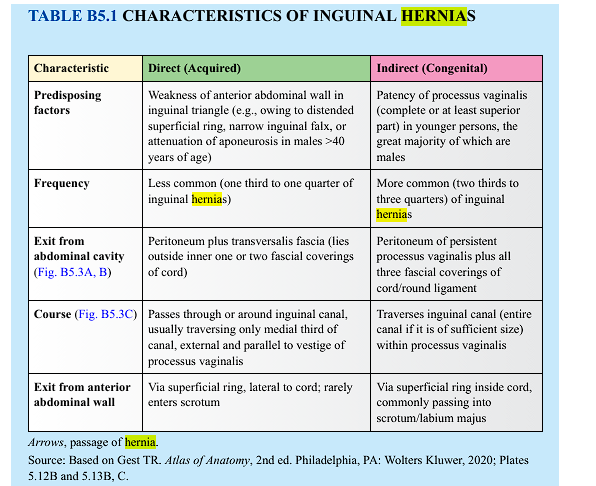
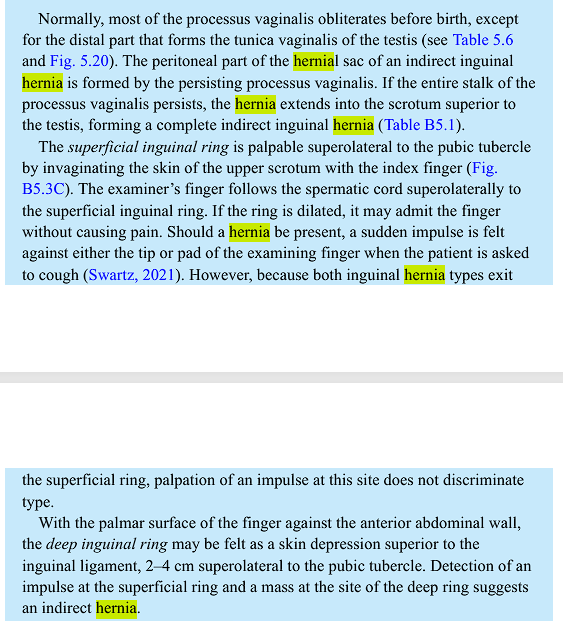
palpation
detection of an impulse at the superficial ring and a mass at the site of the deep ring suggests an indirect inguinal hernia.


what is the relationship between cysts and hernias?
cysts can produce a bulge and have the potential to develop into an indirect inguinal hernia (because it’s from birth, so it’s indirect).
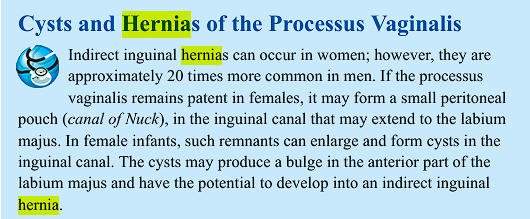
hydrocele and indirect inguinal hernias
hydrocele is an accumulation of fluid in the testes that can cause an indirect inguinal hernia.
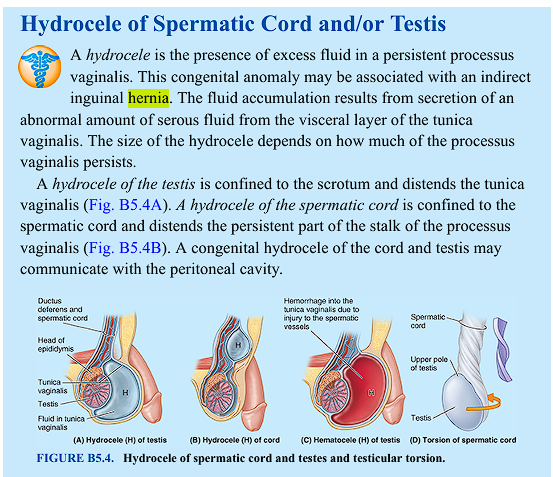
internal hernai
hernia of the intestine

pyrosis and hiatal hernias
pyrosis “a burn” due to regurgitation, can be due to a hiatal hernia.
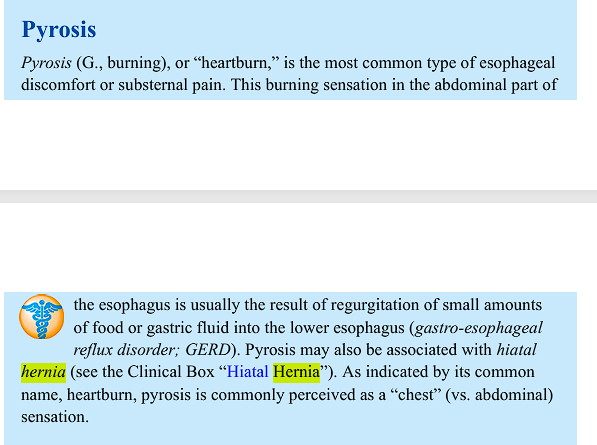
paraesophageal hiatal hernia and sliding hiatal hernia
"Hiatal" is an adjective referring to a hiatus, which is an opening, specifically in the diaphragm, through which the esophagus passes to connect to the stomach.
Hiatal: From the Latin hiatus, meaning "an opening, gap, or cleft."
Hernia: From the Greek hernos (ἕρνος), meaning "a bud or sprout."
So, a hiatal hernia is fundamentally a "budding through an opening"—specifically, the opening in the diaphragm called the esophageal hiatus, through which the esophagus passes to connect to the stomach.
1. Sliding Hiatal Hernia (Type I)
This is by far the most common type, accounting for over 95% of all hiatal hernias.
Mechanism: The gastroesophageal junction (GEJ)—the point where the esophagus meets the stomach—is pulled upward, or "slides," through the diaphragmatic hiatus into the chest.
Anatomy: The GEJ is no longer located below the diaphragm but is displaced into the mediastinum. The stomach fundus follows, but the relationship between the esophagus and stomach remains normal.
2. Paraesophageal Hiatal Hernia (Types II, III, IV)
This is less common but more dangerous. The term "paraesophageal" means "alongside the esophagus."
Mechanism: The GEJ remains in its normal position, fixed below the diaphragm. However, a portion of the stomach, typically the fundus, pushes up through the hiatus alongside (para-) the esophagus. In its pure form (Type II), this creates a "rolling" hernia.
Anatomy: The GEJ is correctly located, but a pocket of stomach lies in the chest next to the esophagus.
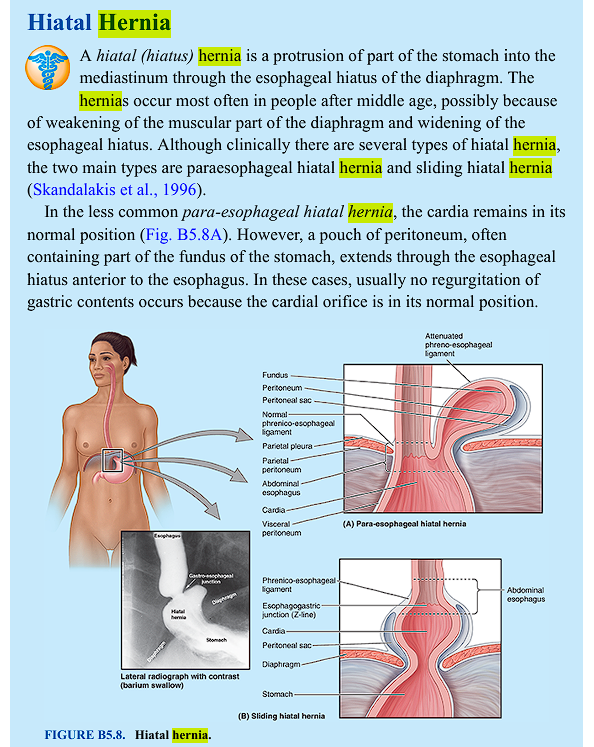
paraduodenal hernias
there are two or three inconstant folds and fossae (recesses) around the duodenal flexure. the paraduodenal fold are large and lie to the left of the ascending part of the duodenum.
if a loop of intestine enters this fossa, it may strangulate: this is the paraduodenal hernia
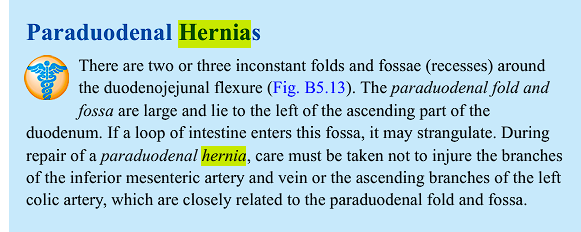
rupture of diaphragm and herniation of viscera.
if the intra-thoracic pressure it TOO LARGE, it can cause a sudden rupture of the diaphragm and thus an her
of Viscera:
Root: From the Latin viscus (plural: viscera), which meant "an internal organ of the body," especially one found in the abdomen (like the intestines, liver, spleen).
Literal Meaning: "Of the internal organs."
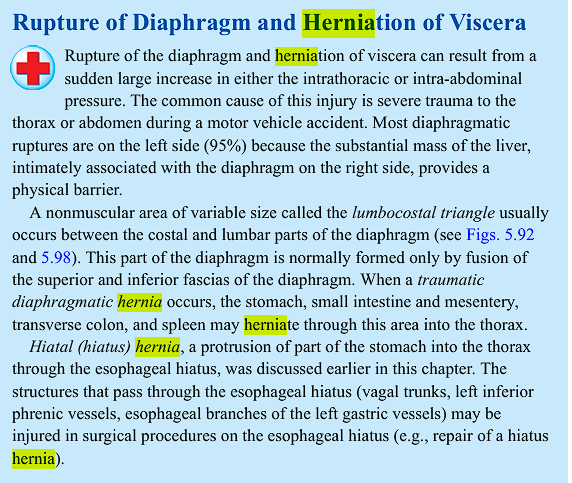
congenital diaphragmatic hernia
